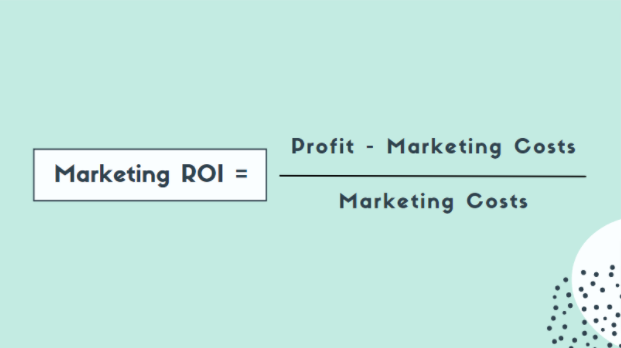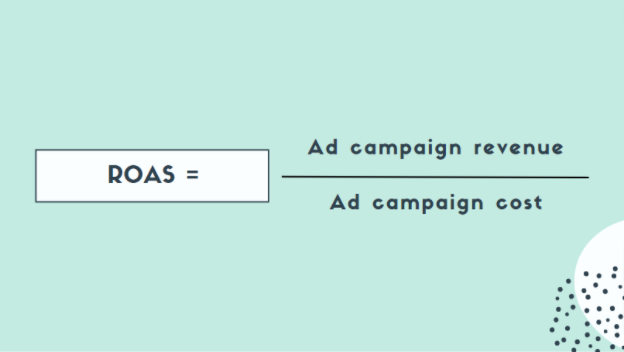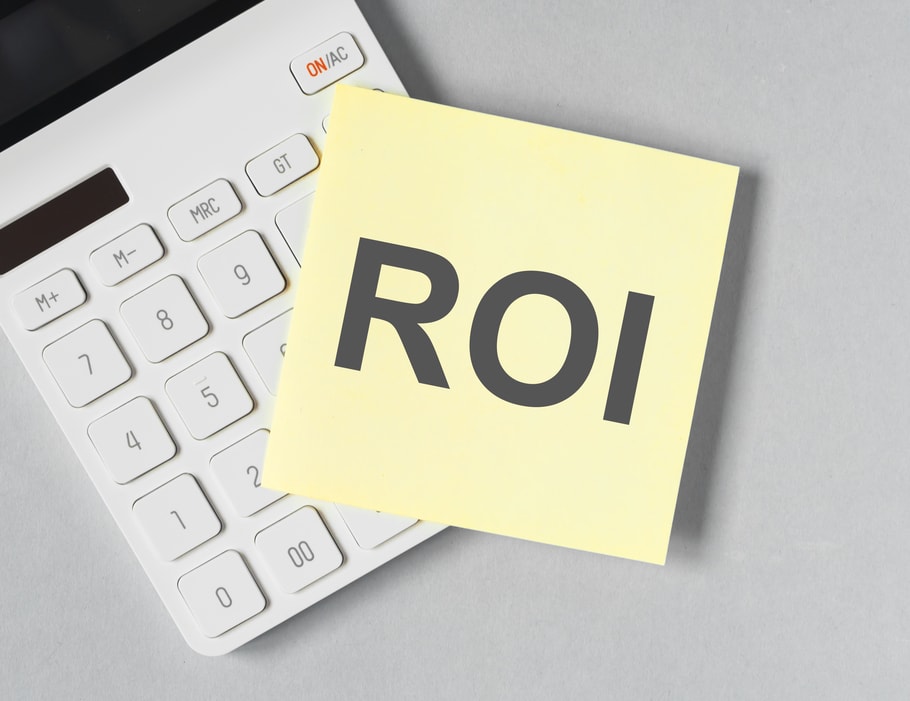How do you define marketing success? If you’re involved in digital marketing or run online advertising campaigns for your business, you’re likely to have come across the following terms at some point: ROI and ROAS.
Generally, you’ll know when your marketing efforts are successful when you can prove you’re getting a high or your expected Return on Investment (ROI). You also use ROI to help justify your marketing spending.
However, the modern business landscape is riddled with fierce competition and a saturated market—placing a growing focus on revenue or Return on Ad Spend (ROAS).
The big question is, which one is a better metric to use to determine your online advertising and marketing success: ROI or ROAS?
This article can help you answer that.
We’ll cover what ROI and ROAS are and how these are different, including which one you’re better off using to determine advertising and campaign success and, in turn, help you plan a winning marketing strategy.
What is ROI (Return on Investment)?
Return on Investment or ROI is a metric typically used in various forms of businesses to measure the effectiveness of investments in generating revenue.
In simple terms, you use ROI to learn what you get back compared to what you’ve put in, including the costs of buying articles online for your content marketing efforts.
We’ll focus on marketing ROI or the calculated impact of your marketing efforts on revenue and growth for this article.
ROI factors in the entire investment, including other marketing resources such as the costs of acquiring reliable digital marketing software, IT, distribution, design, and more.
Essentially, marketing ROI allows you to calculate the total cost of investment to determine if your campaign is profitable using this simple formula:
For instance, if your campaign’s email marketing costs $50 and you make $200 in profit, your marketing ROI would be 300% using the formula above.
In this example, you get $3 for every $1 you invest in your marketing campaign.
Or, you could get $100 in profit with $200 in marketing costs. Your marketing ROI would be -50%, which means for every $1 you spent, you lost $0.5.
In mobile advertising, you can use ROI to determine if specific ads turned in a profit, including whether the ads contributed to your bottomline.
Generally, a good mobile marketing ROI depends on your app’s goals.
If you are ROI positive (or over one) and can keep your efficiency ratio low, you’re doing well since you are generating more revenue than you’re spending.
All this information can help you develop high ROI marketing tactics even if you’re a low-budget startup business. While ROI used to be one of the most important metrics for evaluating success on digital channels, businesses are increasingly coming to rely on ROAS to guide their digital strategy.
Return on investment (ROI) was considered the gold standard metric to justify marketing spend and to measure marketing campaign success but with the boom in e-commerce, digital marketing and data analytics, ROAS entered the game…
Do you want to get a positive ROI and ROAS when running digital campaigns?
What is ROAS (Return on Ad Spend)?
From a 30,000 feet view, Return on Ad Spend (ROAS) is the revenue generated for each dollar spent on a campaign or ad.
However, unlike ROI, using ROAS doesn’t show the marketing investment’s overall profitability. ROAS doesn’t also factor in other additional costs.
Instead, ROAS focuses solely on calculating the ad’s costs and the generated revenue as a direct result with this simple formula:
Let’s assume you generate $1,000 from an ad on Facebook or other specific digital marketing channels you use that cost you $200.
Based on the formula above, your ROAS would be 500%—which means for every $1 spent; you earned $5.
A good ROAS generally depends on your brand goals, marketing channels, margins, and vertical.
Also, there are generally no specific rules on what constitutes good ROAS or how long it takes to generate positive ROAS.
There might also be varying approaches to what can be considered good ROAS across multiple channels and within the same verticals.
For instance, making $5 on every dollar spent on Google AdWords can be a positive outcome, while it could cause concern when running Facebook Messenger ads.
Comparing a bad or good ROAS depends on the profit margins of your offered service or products, advertising channel, and industry.
How ROI and ROAS Differ
There is still confusion around ROAS and ROI, with many marketers using the two interchangeably.
However, ROAS and ROI are not the same. The two are used to tell different parts of your marketing effectiveness story.
ROAS looks at revenue instead of profit. It only considers direct spending rather than other costs associated with your campaigns, such as acquiring robust marketing resource management software and other tools.
ROAS tells you your ads’ effectiveness and whether they generate impressions, clicks, and revenue, while ROI helps determine if your campaign is profitable.
That being said, ROAS is a better metric for short-term tactics, while ROI is a most fitting choice for long-term strategic planning due to its macro approach.
Let’s put the difference between ROAS and ROI into context.
For instance, let’s assume your company spends $10,000 on a Facebook ad campaign and generates $50,000 in revenue.
You can calculate the ROAS as:
$50,000 / $10,000 = $5 (or a 5:1 ratio)
You can use this to compare and optimize your ad performance across platforms and campaigns.
Assuming your company has a 15% margin, you can calculate the ROI using this formula:
((($50,000 x 15%) – $10,000) / $10,000) x 100 = -25%
While a 5:1 ROAS can seem great, calculating the metrics show that your ad campaign generates a negative ROI due to the narrow margin of 15%. You’ll need a 7:1 ROAS for your campaign to be profitable.
Calculating both metrics allows you to see a complete picture of your digital ad campaign’s success (or failure). It can even help you uncover hidden marketing strategies that slow your business down. To create an effective digital advertising campaign, you’ll need to use both performance metrics. ROI will give you insight into the overall profitability of your advertising campaign, while ROAS will help identify the exact strategies that help you generate more advertising conversions and revenue.
Now is the time to get a positive ROI and ROAS with your online campaigns!
Measuring Your Digital Ad Campaign ROI
Assessing your digital ad campaign’s ROI helps you find opportunities to refine your efforts for greater impact. It can also help you uncover low-cost, high ROI marketing tactics to grow your business.
Some ways to measure your digital ad campaign ROI include the following.
1. Measure programmatic advertising ROI
When following programmatic advertising trends and measuring your programmatic advertising’s ROI, such as sidebar or banner ads, focus on tracking reputation (positive or negative mentions) and recognition.
Include your website traffic numbers, especially traffic that come directly from visitors who visit your site by typing the web page URL.
Measuring ROI helps you assess and determine the programmatic ad buying techniques to integrate to improve your returns.
2. Measure native ads ROI
You can determine the ROI for your native ads typically by measuring click-throughs.
You can also measure this via mindshare, customer acquisition, reputation, and brand recognition.
3. Measure mobile video ads ROI
The best ways to measure your mobile video ads are to track direct-purchase influence, brand awareness, video accessibility, and how much viewers discuss and share your video.
Measuring Your Digital Ad Campaign ROAS
Whether you use Google Ads, Facebook Ads or another advertising platform, knowing your ad campaign’s ROAS can help you assess whether your ads are working, giving your expected returns, and other critical campaigns facts in real time. It helps you identify your most effective methods and adjust your campaigns promptly.
Below are some of the tactics to help you track and measure your digital ad campaign’s ROAS
1. Understand the value of a customer
Before choosing the right advertising method, you’ll need to learn how much an average sale earns you first—allowing you to measure your ROAS later.
You’ll also need to know the amount you have to spend to obtain the customer and compare the costs of each acquisition method to help you develop a profitable campaign.
Also, factor in your long-term revenue when estimating a customer’s value.
2. Track ad campaign efficiency across channels and methods
Know your ideal customers’ immediate needs, explore the channels and methods where you can best run your campaigns, and track your efficiency as you go.
These can help you determine your campaigns’ total cost and labor and development costs, necessary for calculating your ROAS.
With this, you can determine each of your ad’s effectiveness.
3. Factor in crucial aspects when calculating ROAS
Consider the following when calculating ROAS
- Vendor costs or the amount spent on vendor fees and commissions involved in running the ad.
- Salary costs or the total amount spent on the advertising staff’s (in-house and outsourced) salaries
- Purchased impressions refer to the amount you spent on paid impressions
- Affiliate commission is the amount you paid to affiliates and networks
Factor in these critical aspects when calculating ROAS to get the correct values. You can use the resulting information to re-align your resources and assess each ad campaign’s success based on various parameters.
Pro tip: when running digital advertising campaigns whether it’s on Meta, Google, TikTok, LinkedIn or elsewhere, always use a ROAS calculator. This way you will know if the campaigns you’re running are performing.
ROI vs ROAS: The Final verdict!
In a nutshell, the idea is not to choose only ROAS or ROI. To create the perfect digital advertising campaign, you should consider both ROI and ROAS, acting as quickly as possible to promote better returns. Each metric provides a specific view to help you see the whole picture of your advertising and marketing effectiveness and success.
ROI can help you understand your marketing efforts’ long-term profitability, while ROAS can be a better option for optimizing your short-term strategies. Unlike ROI, it won’t tell you whether your paid advertising effort is actually profitable for the company, but it can be a great way to help you improve your online marketing efforts and generate clicks and revenue.
For this reason and others, many companies look at both ROI and ROAS to create results-oriented marketing strategies and campaigns. You need to track and measure ROAS and ROI to help you develop an effective digital marketing campaign that can deliver your expected results.
While using both metrics in tandem is useful, the pendulum is swinging back from the widespread use of the ROAS-focused model in digital advertising, to a more rigorous ROI-focused model. If you want to look at your marketing department’s overall health, you should focus on and use ROI.
You can always change or drop things to ensure optimum profitability for your marketing campaigns.
If you want to get granular and understand if your specific ads are making back what you are spending, then looking at your ROAS is your best bet.
Growth Hackers is among the best PPC advertising agencies helping businesses from all over the world grow. There is no fluff with Growth Hackers. We help entrepreneurs and business owners get both a positive ROI and a positive ROAS when running growth marketing campaigns by driving targeted traffic, generating qualified leads, optimizing their conversion rate gathering and analyzing data analytics, acquiring and retaining users and increasing sales. We go further than brand awareness and exposure. We make sure that the strategies we implement move the needle so your business grow, strive and succeed. If you too want your business to reach new heights, contact Growth Hackers today so we can discuss about your brand and create a custom growth plan for you. You’re just one click away to skyrocket your business.







